This project is a threefold project for me. Firstly, I have joined the Æthelmearc Foresters’ Guild and part of that involvement is to create a kit for a forester persona. Secondly, I signed up for the Atlantian Persona Development Challenge, which is sponsored by Their Majesties, to develop or expand your persona’s kit by creating 4 new items. Despite missing the first deadline, I hope to continue to share my work towards this and am therefore combining items 1 & 2 in this document. Finally, I am attempting a serious round of stash busting here and this kit will be largely comprised of stash items.
This documentation is somewhat sparse for me, but in order to meet the project deadline, I will be rolling with this and can update later as needed.
For the purpose of the Atlantian project the specifics are (this might alter over time as I do more general research on the profession and period):
Time: 1335 CE
Location: Forest of Galtres in Yorkshire, England
Persona: Forester (profession), male – More detailed information has not yet been determined
For the tunics, I looked first at existing items that could be used as a source. None exist from Enland at all, so I had to range further for examples. Many of the garments such as the Tunics from Kraglund, Moselund and the Guddal tunics all skew too early (none date later than 1165) and are from Scandinavia. There are shirts that belonged to St. Louis (French, 13th c) and Francis of Assisi (Italy, 13th c), and others of similar provenance. Many of the Greenland garments do fall into the correct time period, as does the Bocksten Tunic from Sweden. Because I wanted to move forward with this project swiftly, I chose the simpler Bocksten garment as my base rather than the examples from Greenland which often exhibit more complex tailoring.
This documentation is somewhat sparse for me, but in order to meet the project deadline, I will be rolling with this and can update later as needed.
For the purpose of the Atlantian project the specifics are (this might alter over time as I do more general research on the profession and period):
Time: 1335 CE
Location: Forest of Galtres in Yorkshire, England
Persona: Forester (profession), male – More detailed information has not yet been determined
For the tunics, I looked first at existing items that could be used as a source. None exist from Enland at all, so I had to range further for examples. Many of the garments such as the Tunics from Kraglund, Moselund and the Guddal tunics all skew too early (none date later than 1165) and are from Scandinavia. There are shirts that belonged to St. Louis (French, 13th c) and Francis of Assisi (Italy, 13th c), and others of similar provenance. Many of the Greenland garments do fall into the correct time period, as does the Bocksten Tunic from Sweden. Because I wanted to move forward with this project swiftly, I chose the simpler Bocksten garment as my base rather than the examples from Greenland which often exhibit more complex tailoring.
The Bocksten Tunic
This garment is dated to 1350-1370 from Varberg, Sweden. The find consisted of a tunic, hood, hosen, cloak and accessories. Details are as follows (based on information in Clothing the Past.
This garment is dated to 1350-1370 from Varberg, Sweden. The find consisted of a tunic, hood, hosen, cloak and accessories. Details are as follows (based on information in Clothing the Past.
- 2/1 twill wool that was fulled
- Currently yellow brown outside and reddish brown on the interior
- The original fabric was 21.6 inches wide
- The garment had no shoulder seams
- Lighter area at the waist shows that a leather belt was work with it
- There are gores in the front, back and sides
- There are triangular gussets under the arms
- Length is 90.5 inches
- Width at hem is 98.4 inches
- Sleeve lengths – 24 for the right sleeve, 23.4 for the left
- Wrist circumference is 8.6 inches
- Neck circumference is 32.2 inches
- There is no thread left, so the presumption is that is was linen
- One selvedge the length of the body was preserved
Personal observations: One thing that I noticed while looking at more detailed images of this tunic (something that has become a ubiquitous garment in the SCA) is that the sleeves, while having a straight edge where it meets the body panel (i.e. no curved sleeve cap), they appear to still be inset into the garment itself (we see this with very early tunics like Lendbreen as well). This sent me out to look at how different the sleeves and the armscye can be even amongst samples from a similar time and place (for example, some of the Greenland garments have shaped sleeve heads, but the armscye itself is not cut away).
Another observation had to do with the sleeves themselves. I was taught nearly 30 years ago that a rectangular cut tunic had sleeves that look like the first diagram below when flattened out. Over time, I altered that to have the square gusset sit flat against the sleeve body and taper from that point to the wrist (center image). The Bocksten tunic does not taper until past the elbow. This allows one to have a narrower sleeve in the upper while fitting well in the lower arm than my typical model does.
Another, slightly eerie, observation is that I am very similar in size to the Bocksten man.
Another observation had to do with the sleeves themselves. I was taught nearly 30 years ago that a rectangular cut tunic had sleeves that look like the first diagram below when flattened out. Over time, I altered that to have the square gusset sit flat against the sleeve body and taper from that point to the wrist (center image). The Bocksten tunic does not taper until past the elbow. This allows one to have a narrower sleeve in the upper while fitting well in the lower arm than my typical model does.
Another, slightly eerie, observation is that I am very similar in size to the Bocksten man.
Additional data that informed my final choices comes from the Luttrell Psalter. This manuscript, dating to 1325-1340, from Northern England, displays a number of “working class” people and I felt that this served as a good source of imagery to composing my kit. There are variations in tunics in this art, including skirts that appear to have no slits, those with openings at the front or sides, a range of lengths, and also some sleeves that appear to be shorter than others. Based on these images, as well as the Bocksten tunic, I made the choice to incorporate long sleeves, no slits in the skirt and a round neckline for my garments.
The Textiles
While there are no existing tunics from England for this period, there are a range of textile fragments. The following information on textiles come from Textiles and Clothing 1150-1450.
- Tabby is the most common wool weave through the 14th century – first half of the 15th
- Z/S (Z spun threads for the warp with S spun for the weft) are more common than use of Z or S in both systems (Z/S is more suitable for raising nap in the fulling process, which creates warmer cloth)
- 2/2 and 2/1 twill wool does show up in my chosen period and while not as prevalent is tabby, it was also not uncommon
- 2/2 twills were almost always Z spun yarn in both systems, with balanced weaves
- Wool textiles have a broad range in density of the weave
- Linen did not typically survive well but the existing fragments from the 2nd half of the 13th century show 56 threads to the inch in one system with an average of 50 in the other, those from the last quarter of the 14th century are 50 in one system and 48 in the other
My Tunics
- I cut out both tunics with no seam at the shoulders
- Initially I cut out the sleeves based on my former preferred diagram, but recut the wool tunic to have sleeves similar to Bocksten
- I added side gores to the under tunic
- I placed front, back and side gores in the over tunic. My side gores are pieced and the front and back are whole triangles, this differs from the arrangement of the Bocksten tunic (which I was not attempting to recreate, but was rather letting it serve as my prime example)
- I initially cut the wool tunic with the selvedge along one side as we see in the Bocksten example, but after completing the neckline, I choose to narrow the body and had to remove width equally from both sides
- Wool tunic length – 92”
- Wool sleeve length – 22”
- Wool wrist circumference – 8”
- Wool neck circumference – 25”
- The neck of the linen tunic is a rolled hem secured with a whipstitch in linen thread
- Sleeve and bottom hem for the linen tunic will also be completed with a whipstitch in linen thread
- The internal seams of both tunics are machine sewn
- The wool tunic has a neckline and hems that is folded once and secured linen thread using a whipstich over wool yarn (we see this in Greenland). Linen thread on wool garments is supported by the lack of existing thread in the Bocksten tunic, and is mentioned in Textiles and Clothing 1150-1450
- I am slowly finishing the seams by using a running stitch to keep the seam allowance flat against the body of the cloth. I far prefer to sew with overcast (which was more common in the earlier periods that I did), but it is noted in Textiles and Clothing 1150-1450 that running stitch was the most common for these types of applications
- Cloth – the outer tunic is 2/2 twill 100% wool. This was purchased on a clearance rack at Joanns for $4 a yard because of a dye flaw. I bought all of it. The flawed areas are more visible from one side of the fabric so I used that as the inside. The surface of the cloth is slightly brushed.
- Linen – I do not even recall purchasing 5 yards of 3.5oz linen in bleached white from the Fabrics-Store, but apparently I did. Thread count for this is 57 inches in the warp and 44 in the weft, which is fairly close to the existing linens.
Next Steps:
- Dyeing wool from my stash for hosen, hood and mantle
- Making the above items
- Making braies
- Making a pouch
- Procuring a belt and shoes appropriate to the period
Resources
Note that these are all resources that I have pulled to review for this ongoing project. I last read some of them many years ago and plan to reread in their entirety as I work through this project.
Backhouse, Janet. Medieval Rural Life in the Luttrell Psalter (University of Toronto Press), 2000. https://amzn.to/43stevi
Carlson, Marc. “Some Clothing of the Middle Ages”, 2006. http://lib.utulsa.edu/speccoll/marccarlson/cloth/bockhome.html
Coatsworth, Elizabeth and Gale R. Owen-Crocker. Clothing the Past: Surviving Garments from Early Medieval to Early Modern Western Europe (Brill), 2018. https://amzn.to/46VHkbx
Crowfoot, Elisabeth, Frances Pritchard and Kay Staniland. Textiles and Clothing 1150-1450 (Boydell Press), 2006. https://amzn.to/3Q3WMw3
Egan, Geoff and Frances Pritchard. Dress Accessories 1150-1450 (Boydell Press), 2008. https://amzn.to/3NZF2iC
Forest, Maggie. “The Bocksten Tunic”, 2003. http://www.forest.gen.nz/Medieval/articles/garments/bocksten/bocksten.html,
Fransen, Lilli, et al. Medieval Garments Reconstructed: Norse Clothing Patterns (Aarhus University Press), 2010.
Gutarp, Else Marie. Medieval Manner of Dress: Documents, Images, and Surviving Examples of Norther Europe, Emphasizing Gotland and the Baltic Sea (Gotlands Fornsal), 2001.
Houston, Mary G. Medieval Costume in England & France: The 13th, 14th, and 15th Centuries (Dover Publications), 1996.
Newtown, Stella Mary. Fashion in the Age of the Black Prince (Boydell Press), 2016. https://amzn.to/3rwnoeY
Østergaard, Else. Woven into the Earth: Textile Finds in Norse Greenland (Aarhus University Press), 2004.
Thursfield, Sarah. Medieval Tailor’s Assistant, 2nd Edition (Crowood Press), 2015. https://amzn.to/3NV2P3w
Vedeler, Marianne. “Klær og Formspråk i Norsk Middelalder” (Universitetet i Oslo), 2006.
“The Bocksten Man Find”, Hallands Kulturhistoriska Museum. https://museumhalland.se/en/the-bocksten-man/
“The Luttrell Psalter”, British Library. http://www.bl.uk/turning-the-pages/?id=a0f935d0-a678-11db-83e4-0050c2490048&type=book
“Men’s and Women’s Accessories of Medieval Romanesque Period - 11th - 15th Centuries Pattern” La Fleur De Lyse Patterns.
Note that these are all resources that I have pulled to review for this ongoing project. I last read some of them many years ago and plan to reread in their entirety as I work through this project.
Backhouse, Janet. Medieval Rural Life in the Luttrell Psalter (University of Toronto Press), 2000. https://amzn.to/43stevi
Carlson, Marc. “Some Clothing of the Middle Ages”, 2006. http://lib.utulsa.edu/speccoll/marccarlson/cloth/bockhome.html
Coatsworth, Elizabeth and Gale R. Owen-Crocker. Clothing the Past: Surviving Garments from Early Medieval to Early Modern Western Europe (Brill), 2018. https://amzn.to/46VHkbx
Crowfoot, Elisabeth, Frances Pritchard and Kay Staniland. Textiles and Clothing 1150-1450 (Boydell Press), 2006. https://amzn.to/3Q3WMw3
Egan, Geoff and Frances Pritchard. Dress Accessories 1150-1450 (Boydell Press), 2008. https://amzn.to/3NZF2iC
Forest, Maggie. “The Bocksten Tunic”, 2003. http://www.forest.gen.nz/Medieval/articles/garments/bocksten/bocksten.html,
Fransen, Lilli, et al. Medieval Garments Reconstructed: Norse Clothing Patterns (Aarhus University Press), 2010.
Gutarp, Else Marie. Medieval Manner of Dress: Documents, Images, and Surviving Examples of Norther Europe, Emphasizing Gotland and the Baltic Sea (Gotlands Fornsal), 2001.
Houston, Mary G. Medieval Costume in England & France: The 13th, 14th, and 15th Centuries (Dover Publications), 1996.
Newtown, Stella Mary. Fashion in the Age of the Black Prince (Boydell Press), 2016. https://amzn.to/3rwnoeY
Østergaard, Else. Woven into the Earth: Textile Finds in Norse Greenland (Aarhus University Press), 2004.
Thursfield, Sarah. Medieval Tailor’s Assistant, 2nd Edition (Crowood Press), 2015. https://amzn.to/3NV2P3w
Vedeler, Marianne. “Klær og Formspråk i Norsk Middelalder” (Universitetet i Oslo), 2006.
“The Bocksten Man Find”, Hallands Kulturhistoriska Museum. https://museumhalland.se/en/the-bocksten-man/
“The Luttrell Psalter”, British Library. http://www.bl.uk/turning-the-pages/?id=a0f935d0-a678-11db-83e4-0050c2490048&type=book
“Men’s and Women’s Accessories of Medieval Romanesque Period - 11th - 15th Centuries Pattern” La Fleur De Lyse Patterns.
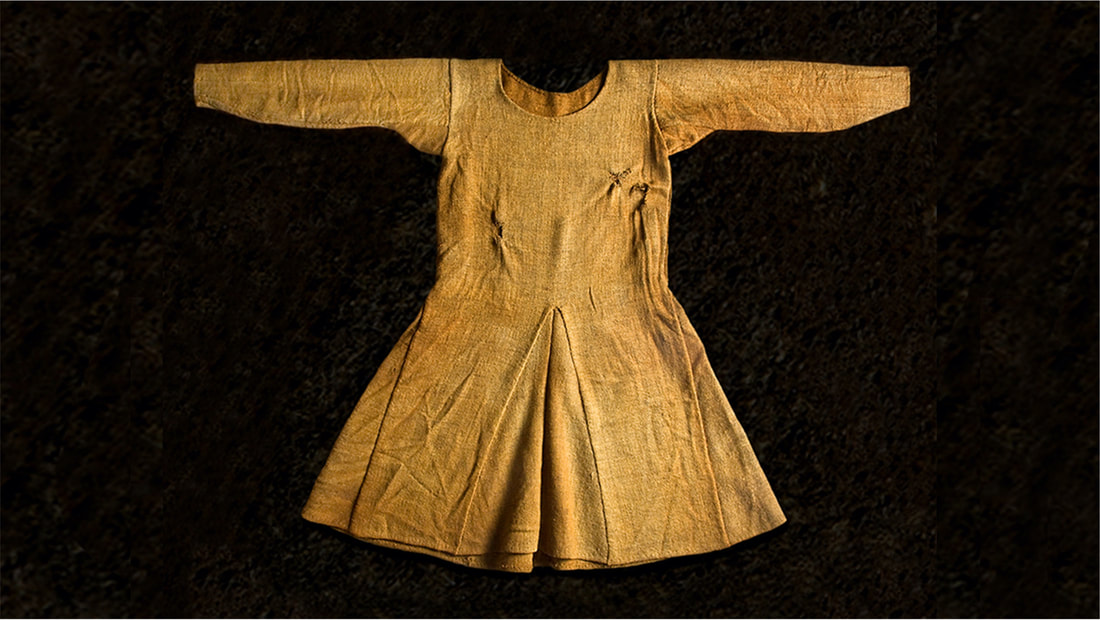

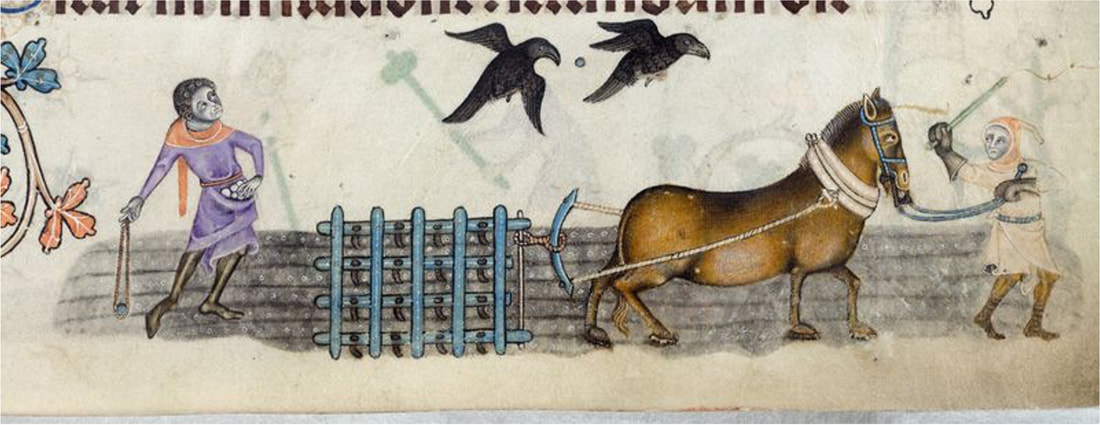
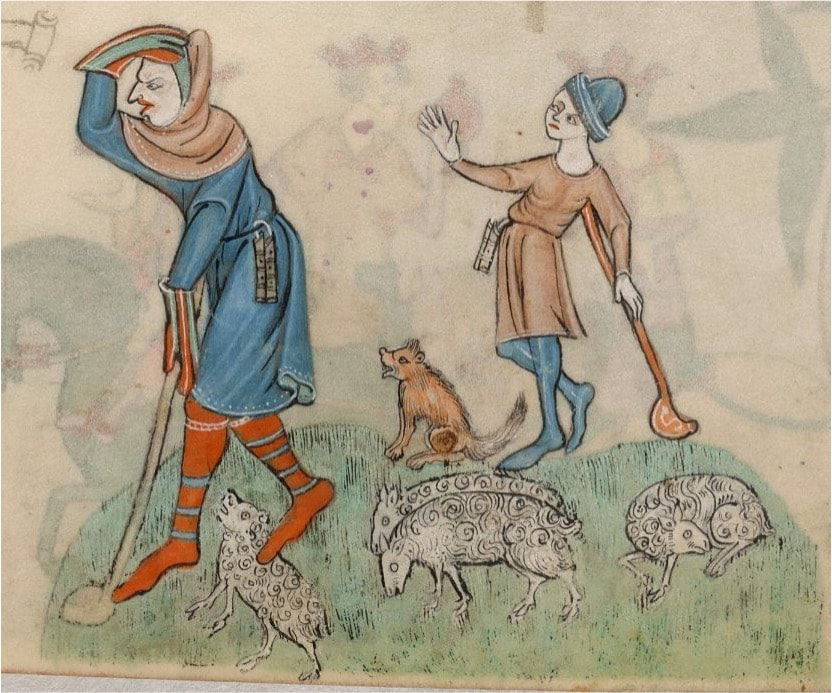
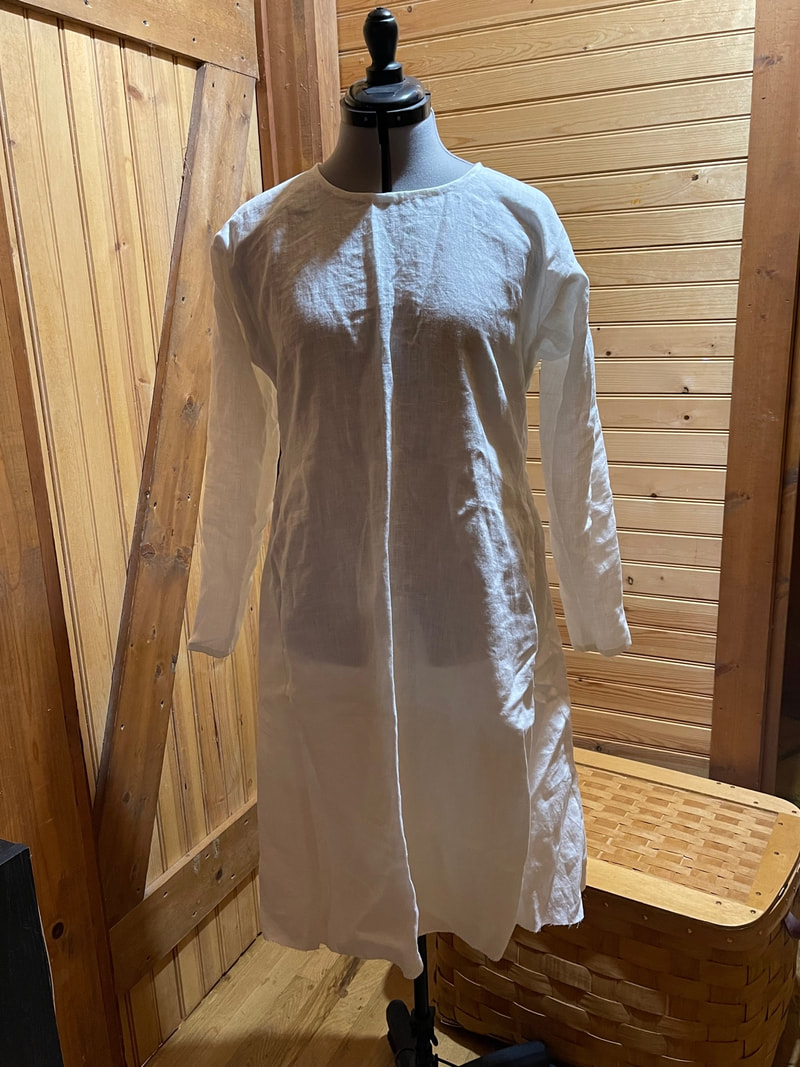
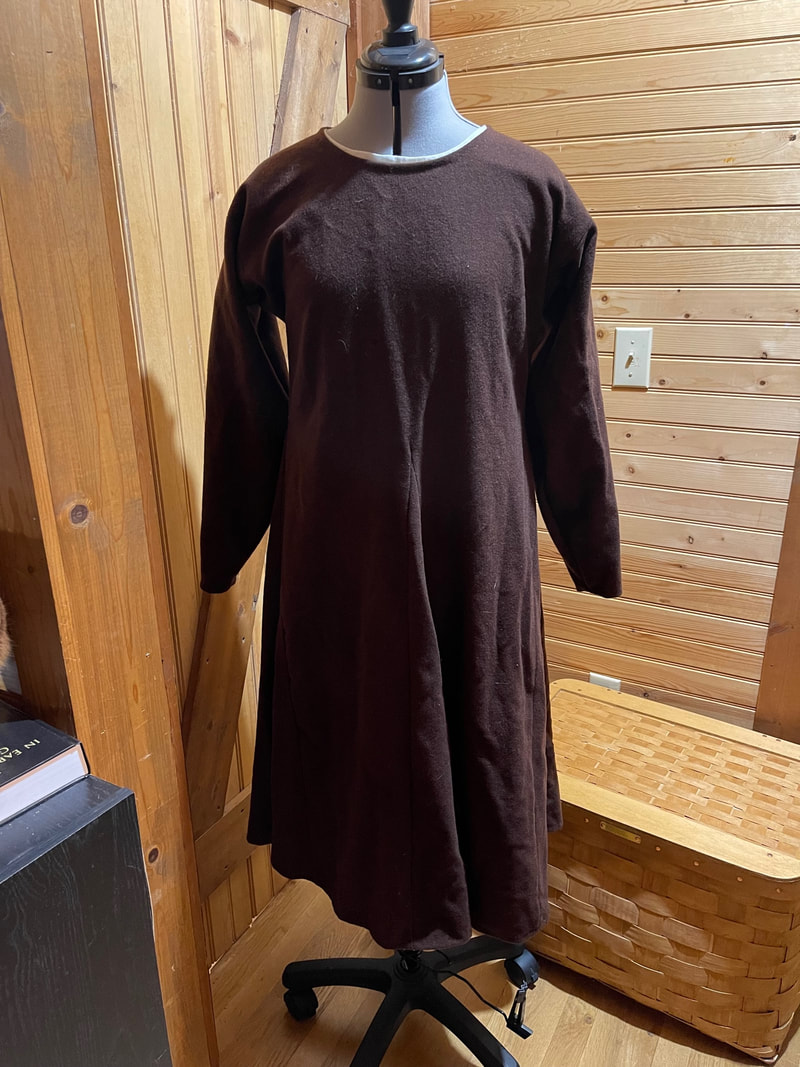
 RSS Feed
RSS Feed